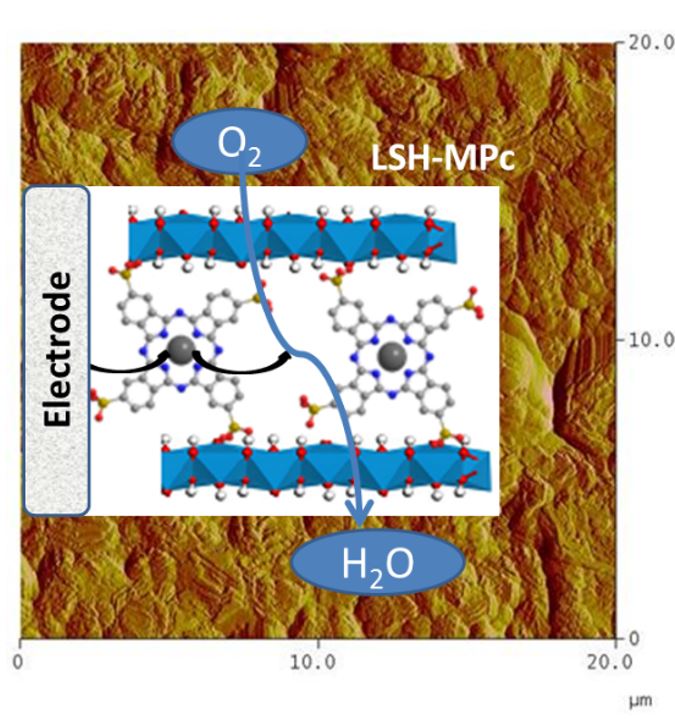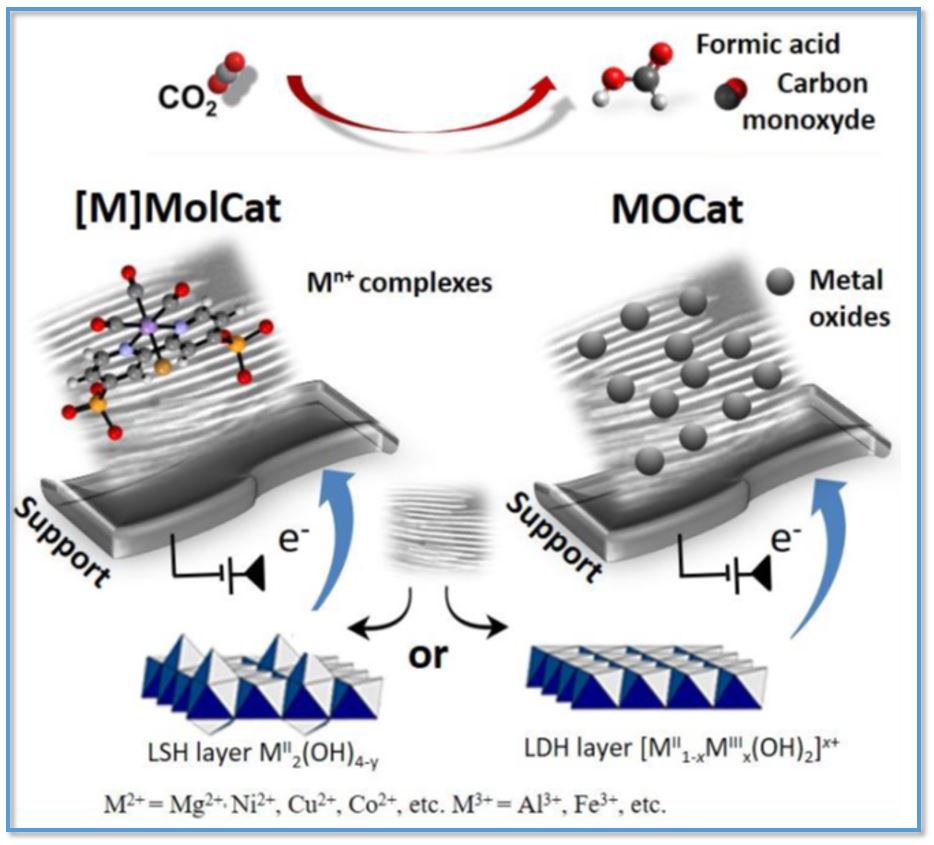The functionalization of simple lamellar hydroxides by transition metal complexes allows to give them interesting properties for possible environmental applications, electrocatalytic reductions of O2 and CO2.
Layered Simple Hydroxides for electrocatalytic reductions of O2
We were able to functionalize Co, Cu and Zn layered hydroxides with phthalocyanine tetrasulfonates (Co, Ni, Cu, Zn).[1] Electrochemical measurements (collaboration with Christine Mousty, Laboratoire des Matériaux Inorganiques, Clermont-Ferrand) allowed us to better characterize the synthesized hybrid materials.[2] They showed in particular that the catalytic activity of copper and cobalt phthalocyanines towards the reduction of oxygen was preserved once these phthalocyanines were inserted in the interlamellar space of simple copper and cobalt hydroxides. One of the particularly interesting points of this study is that this catalytic activity is sensitive as early as pH 7, whereas the catalytic activity of cobalt phthalocyanines towards O2 reduction is generally observed at higher pH (8.5 to 9). Moreover, EPR measurements on compounds functionalized with cobalt phthalocyanines show the formation of a CoIII(Pc)-O2 adduct.[2]

Layered Simple Hydroxides for electrocatalytic reductions of CO2
The need to reduce CO2 emissions and the challenges posed by intermittent renewable energy production could be sensibly addressed by using CO2 as an energy carrier but also as a renewable carbon feedstock for the production of valuable carbon-reduced chemicals. Therefore, CO2 transformation is an urgent challenge in chemistry. The objective of the fundamental research project CALHYCO2 (“Structured CAtalyst in Layered HYdroxide materials for selective CO2 electroreduction reaction” in which we are partners (leader: Sylvie Chardon (DCM, Grenoble), partner: Christine Mousty (ICCF, Clermont-Ferrand)) is to create and develop innovative nanostructured single or double layered hydroxide (HSL or HDL) compounds containing molecular coordination complexes or metal oxide catalysts for selective CO2 electroreduction.

In our team, Layered Simple Hydroxides have been selected as host matrices to realize the heterogeneization of molecular catalysts ([M]MolCat@LSH). Their specific functionalities for CO2 adsorption/activation and for the selective catalytic electrochemical conversion of CO2 should allow a significant improvement of the performance of CO2ERR catalysis.
[1] R. Bourzami, S. Eyele-Mezui, E. Delahaye, M. Drillon, P. Rabu, N. Parizel, S. Choua, P. Turek, G. Rogez, Inorg. Chem. 2014, 53, 1184–1194.
[2] S. Eyele-Mezui, P. Vialat, C. Higy, R. Bourzami, C. Leuvrey, N. Parizel, P. Turek, P. Rabu, G. Rogez, C. Mousty, Journal of Physical Chemistry C 2015, 119, 13335–13342.
